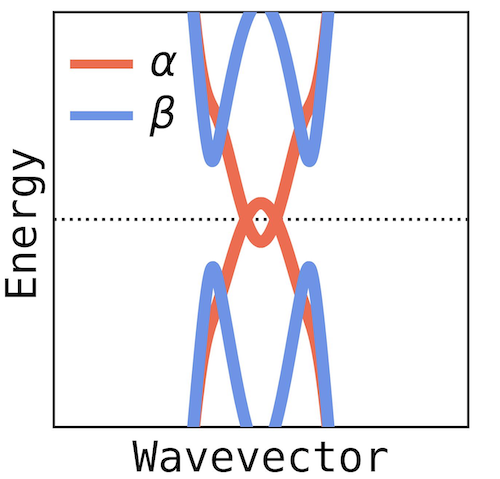Theory and Simulation of Materials
Materials lie at the heart of almost every modern technology and our research is dedicated to the application and development of theory and computational simulation tools for solving problems in materials. We develop and use methods at a wide range of length and time-scales, combining analytical theory, quantum mechanical first-principles simulations of interacting electrons and nuclei, atomistic simulations that use simpler models of interatomic bonding, coarse-grained molecular dynamics and Monte Carlo techniques. The state-of-the-art computational tools that are developed in our group are shared with the wider scientific community, either through commercial, academic or general public (open-source) license, to benefit the pursuit and dissemination of knowledge in this field.
Discover more by reading our recent research spotlights »
Current projects
- 2D materials and twisted 2D heterostructures
- Multi-functional oxide materials, ferroelectrics
- Defects in nanostructures and at interfaces
- Structural, mechanical and transport properties of polymers and polymer nanocomposites
- Electronic, optical and transport properties of nanodevices
- Development of methods for linear-scaling density-functional theory
- Local orbital and Wannier function methods for large-scale simulations
Codes developed in our group
ONETEP: Conventional quantum-mechanical calculations within the framework of density-functional theory (DFT) work with delocalised wavefunctions (Bloch bands) that extend over the entire system. As a consequence, the computer effort required to solve the problem scales as the cube of the system-size and, even with the most powerful supercomputers, systems of no greater than a few hundred atoms may be studied. Reformulating the problem in terms of localised functions and the single-particle density matrix reduces this scaling to only linear with the system-size, opening up the possibility of bringing to bear the predictive power of first-principles simulations on systems of scientific and technological interest that are beyond the capabilities of conventional approaches. ONETEP is a linear-scaling DFT code that is developed in our group.
Wannier90: The delocalised Bloch bands that describe the electronic ground state of a system can be transformed into a set of maximally-localised Wannier functions (MLWFs). These are philosophically similar to the localised molecular orbitals used in quantum chemistry. Working with MLWFs has a number of advantages over using extended Bloch states: they provide chemical insight into bonding; their centres contain information about the local polarisation via the modern theory of polarlisation; they can be used as a natural and very accurate minimal basis set for large-scale calculations of, for example, transport properties in nanostructures. Wannier90 is a code for calculating MLWFs that is developed in our group. Read this review article for more details.
